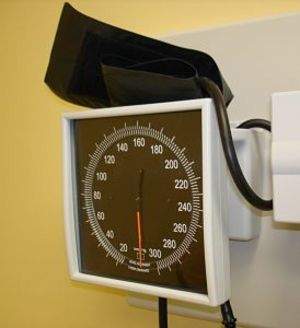The Skinny
According to the CDC, sleep deprivation can lead to, or increase the likelihood of, developing many chronic illnesses including diabetes, obesity, cardiovascular disease and depression. Lack of sleep can also lead to injuries, a poor quality of life and loss of productivity.
Avoiding Chemical Sleep Aids
Having wrestled with insomnia for nearly my entire life, I am well-versed in the numerous remedies and solutions that exist in combatting this insidious condition. If there is a technique or substance available to help one fall asleep faster, the likelihood that I have tried it is roughly 99%. Three substances that will knock me out with the greatest success are beer, Ambien and Nyquil (or any other nighttime cold or flu medication containing diphenhydramine).
However, since committing myself to a healthier lifestyle, I have eliminated my intake of drugs. Besides, drinking beer every night in order to fall asleep will only ensure that I’ll wake up with a headache AND with an increasingly larger waist size. Ambien will make me believe that I’m getting a good night’s rest when I’m actually shopping for beach towels at Wal-Mart at 2am. Lastly, cold and flu medications will do the trick, but finally reaching that fully-awake state by noon is not a good way to begin a productive day.
So, since eliminating these substances, I had to carefully examine how and why I was having difficulty falling asleep. In conducting my research and trying new things, I combed over material from the Centers for Disease Control and Prevention, National Sleep Foundation and National Sleep Awareness Roundtable.
So, what method do I now use with great success? It’s one that I have developed with significant research and trial and error. My method is essentially a hybrid of the points from the sources cited above along with some others that I established on my own.
Set the Stage
Before getting into the actual process though, there must be some ground rules established. You must set the stage for slipping into dream-land.
- 1. If your bedroom or place where you’re trying to sleep is too hot, cold, bright or noisy, you have to adjust the environment to increase your chances of success. Just as an alcoholic would not attempt to quit drinking while in a bar, you have to give yourself the physical advantages that will help achieve success. Your eyes will naturally register any light, even through your eyelids, as stimuli. Since human beings have historically been monophasic sleepers (despite Buckminster Fuller’s assertion to the contrary), your body’s natural tendency will be to stay awake when your eyes register light. The same applies to noise and change in temperature.
- 2. Schedule your sleep at the same time each night. It can typically take as little as three days to establish a set point for your ‘body clock’. Pick a time and stick as close to it as possible. If your career allows, try to arrange the time you wake to coincide with first light. Go back eight hours from first light to determine best time for lying down to sleep.
- 3. Outside of sleep, eliminate any other activities that you would typically conduct in bed. Read, watch TV or look over work papers elsewhere. Your bed should be for sleeping only. If you have S-E-X in bed on a regular basis, congratulations and you’re in your right to proceed unless you want to try the kitchen table, stairs or a chair on the patio if exhibition is your thing. But if you’re married, just try not to read or watch TV in bed.
- 4. Do not eat at least two hours before going to bed. I double this. Because of my freaky metabolism, I become energetic for three to four hours after a meal. If I’m hungry close to the time I’m going to be sleeping, I limit how much I eat and I try to eat something high in protein and low in carbs and fat. A glass of soy milk usually does the trick for me in keeping my appetite at bay.
- 5. Do not drink caffeine at least six hours before bedtime. Caffeine stays in your system for as long as six hours. My rule of thumb is not to drink any caffeine after lunchtime.
Planned Loss of Control
The following will address the actual mental technique that I have been using with great success. Since insomnia is often rooted in the fear of not being able to sleep, the anxiety that the condition brings results in a self-perpetuating vicious cycle. In order to arrest this process, I use an amalgamation of both Cognitive Behavioral Therapy and Acceptance Commitment Training.
- 6. Create your ‘Leaves on a Stream’. This is a technique taught in ACT for dealing with negative thoughts that I have used for both napping and sleeping. The idea is to not attempt to control the thoughts that come into our minds, which is impossible (pink elephants anyone?). Instead, recognize them as the thoughts they are and allow them room to simply pass through our minds without reacting physically. To do this, I picture myself standing knee deep in a calm stream. Some may prefer not to see themselves, and instead choose to just see the setting. I find it easier to picture myself in the scene because it helps me get closer to actually feeling the calming environment. Then, as each thought comes into your mind, whether it’s about work, your family, a memory or any other thought that brings fixation or an emotional response, take a leaf off of the tree by the stream (can you see it?) and place the thought onto the leaf. Place the leaf calmly on the water and let it drift away. I usually have to do this with the same thought multiple times, but after I get into a rhythm, it starts happening easily.
- 7. Let the thoughts come. Again, don’t try to control the thoughts. Just allow them to come and then let them move along. Actually encourage new thoughts to come in order to set your mind onto a pattern of rotation. If the leaves on the stream scenario doesn’t work, or you find that particular scene too contrived (I’ll grant that it’s a stretch at first), try one that works for you. For you, maybe it’s floating in outer space and the thoughts are stars, you’re a train conductor and the thoughts are cargo or you’re in a factory and the thoughts are going by on a conveyor belt. Just make your scene calm and most of all, vivid.
- 8. Stay in your scene for as long as possible. There will likely come a point when you are no longer having any problem letting your thoughts happen freely. If you find yourself not needing to do any more than this, congratulations and I’m glad that you could use this well. For me, there always seemed to be a point where I became aware that I was ‘drifting’. In other words, the thoughts that I was keeping moving so that I would not become fixated on any of them would happen in succession. Then, I would become aware that a pattern was happening where I was no longer controlling things. I was not the person in my scene pulling down leaves and letting them drift. At this point, I would jar myself so that I could stay in control of not letting the thoughts take on a life of their own. Sound confusing? It was to me too. Don’t worry. The next step may help to explain.
- 9. Avoid reality. Part of the inherent difficulty in telling an insomniac to allow thoughts to happen randomly so that they can let them go is that one will naturally become self-aware that they’re controlling their thoughts by not controlling their thoughts. In other words, setting up a framework in which to let thoughts happen randomly is still building a framework within which a process without a frame cannot exist. This is where I injected my own method. Once I moved past the point of fixating on one particular thought, which the ‘leaves on a stream’ helped me to avoid, I then had to move past ‘leaves on a stream’ in order to fully allow myself to drift into sleep. I did this by staying as far away from reality as possible with a scenario that I envisioned. I would become a gently flying toaster, drifting in and out of clouds. I would imagine a waterfall made from grape jelly and become a bubble in the goo, falling slowly as I looked down at the gumdrop cliffs. The farther away from any real scenario, the easier it became for my mind to begin to populate the picture. As the picture became more and more elaborate, the more my subconscious would take over in constructing the vision and zzzzzzzzzzz.
Now, I will completely agree with anyone who will read this and tell me that it sounds ridiculous, especially part 9. However, I will also tell those same people that if you’ve battled insomnia as many times as I have, sometimes letting go of our pretentions is exactly the remedy that most of us need. Ridiculous can often be the solution.



